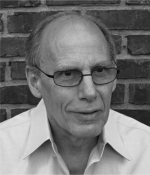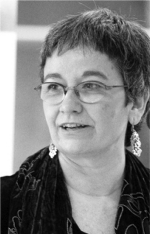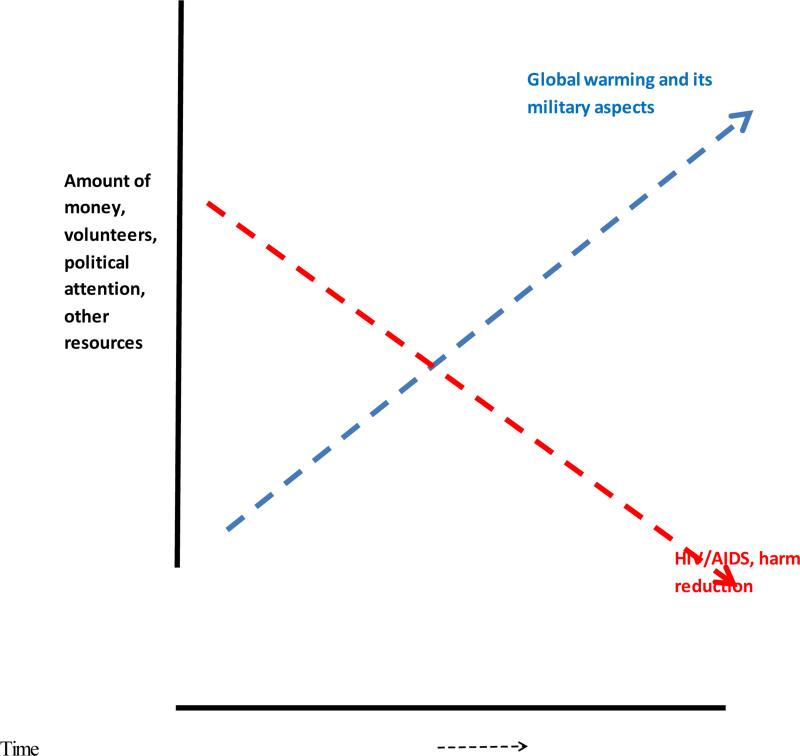Introduction
After some discussions among us, Diana Rossi proposed this special issue of Substance Use and Misuse on Big Events with Diana Rossi as the guest Special Issue Editor. We were not sure if there was sufficient research on this theme, but hoped to encourage others to think and write in these terms. We are quite pleased with what resulted!
Before turning to issues of content, we think it might be useful to present a brief and personal history of the genesis of the term Big Events and of our interest in the topic. Near the end of the 1990s, after some discussions with Benjamin Bowser, Friedman decided to write an article for the International Journal of Sociology and Social Policy on some distressing sequelae of otherwise inspiring events in which structures of human domination and oppression were overthrown by popular rebellion. In particular, Friedman had noticed that the 1989 – 1991 events in Russia and the countries it ruled or dominated; the end of apartheid in South Africa; and the overthrow of dictatorship in Indonesia had all been followed by HIV outbreaks (Friedman et al., 2002). He was concerned that “festivals of the oppressed” (Lenin, 1962) might be fated in the modern era to provoke HIV/AIDS outbreaks with their huge human cost. It took some time for this article to appear. In the meantime, the destruction of 9/11/2001 took place, and, following discussions at the International Congress on AIDS in Asia and the Pacific (ICAAP) in Melbourne the next month, Friedman wrote the first draft of a paper on the potential consequences of the looming US invasion of Afghanistan on the HIV epidemic. (This paper was soon published with Cate Hankins as first author, in part because the destruction of Friedman's workplace in the World Trade Center had made him unable to perform some of the duties of a first author—and in part, of course, because of Dr. Hankins's superior knowledge of and insight into similar events and how public health approached them) (Hankins et al., 2002). At this same ICAAP meeting, Friedman and Rossi discussed the potential for an uprising to take place in Argentina given the severe economic and other difficulties the country was facing. At the end of that year, massive public unrest did take place in Argentina, and resulted in the ouster of several successive Presidents in about two months. Friedman and Rossi immediately sought funding to conduct research to determine if these events would lead to an HIV outbreak and, if so, how. This research was funded, and data collection began in 2003. Through discussions between Friedman and Rossi and Rossi's colleagues at Intercambios Civil Association in Buenos Aires they invented the term “Big Events” as a way to try to understand how revolutions, rebellions, wars, economic crises and similar events might lead in some cases -but not all- to HIV outbreaks. Their first presentation of this idea was at the NIDA International Forum in 2004 in San Juan, Puerto Rico; and the first publication on this idea appeared in 2006 (Friedman et al., 2006).
We have thought back trying to remember why Friedman and Rossi used the term “Big Events” rather than “complex emergencies.” As we remember it, it was in part because the term “complex emergencies” was generally used to refer to disaster relief during and soon after the events. HIV epidemics, however, seemed to emerge several years after the events that we saw as setting the stage for them. At this point, we want to point to another difference between the two terms, and we admit to not being sure about the extent to which this difference was an unconscious factor underlying our preference for the new term. This is that this seemingly-minor difference in terminology is based on very different perspectives on both public health and on our roles in it. Put simply, “Big Events” looks at wars, revolutions etc. as “Events” that ordinary people take part in, shape, and then live with the consequences of. “Complex Emergencies” looks at Big Events like revolutions, wars or economic crises as “emergencies” to be handled from above. We want to raise this point here because we think that many of the people who write about complex emergencies actually think and act in terms of action from below rather than (or alongside) management from above—and we think that this may help them direct their research and actions in ways consonant with their beliefs.
A note on Big Events in Latin America
In the Latin American region, many countries have distanced themselves from neoliberal ideas and have developed social, economic and geopolitical policies that seek more social inclusion. They have maintained both governability and legitimacy of the political parties that have led these changes for a decade or more. For example, Bolivia is no longer the poorest country of Latin America due to policies of this sort implemented by the government headed by Evo Morales (who is the first aboriginal president in the region as well as the former leader of the coca cultivator's movement.) Other countries in the region, including Argentina, Brazil, Uruguay and Venezuela, have also developed policies to reduce inequality and poverty and have openly opposed the neoliberal initiatives developed after the global financial crises of 2008 (In this regard, they might be contrasted with Greece). During this same period that began in Venezuela in 1999 with the government of Hugo Chavez Frías, regional organizations that included other Latin American countries strengthened the views and positions towards reducing inequality in the region. In some of these countries—most notably Argentina, Bolivia and Venezuela—these changes in policies and economic outcomes were accompanied, and to some extent produced or enabled, by massive social struggle in which the broad working class and its allies mobilized by the hundreds of thousands. Nonetheless, no HIV outbreak was identified in any of the mentioned countries during this period. Also the trend of injecting drug use declined significantly in the Southern Cone of Latin America, previously associated with most of the AIDS cases in the main cities of Argentina, Brazil and Uruguay. Colombia and Mexico might be considered exceptions in the Regional panorama, the first one because there is a raising trend of injecting drug use and the second one for the terrible consequences of the war on drugs that since 2006 led to more than 100,000 deaths and disappearances within the country (Rossi et al., 2009; Rossi, 2012). Further research to help us understand this course of events would be useful.
Thoughts on moving research and action around Big Events, drug use, HIV and other outcomes ahead
Given the superb nature of the other commentaries, we feel no need to summarize or discuss the papers in this issue, other than to add one or two thoughts. First, we want to point to the discussion in Nikolopoulos et al. of the phases through which Big Events can lead to HIV epidemics. Based on events in Athens, they suggest that the economic collapse and cutbacks in government employment and programs in Greece disrupted the lives and “income strategies” (Meylakhs et al., in press, Friedman et al., 2013) of people who inject drugs there, that this led to more dangerous patterns of injection behaviors and injection networks—and that these led to the HIV outbreak. They warn of an impending second phase of the epidemic as HIV is transmitted to the sexual partners of infected people who use drugs, and then perhaps to their partners, etc. In addition, they point to a potential third phase if continued economic difficulties (or other pathways) lead to large increases in the population of people who inject drugs, sex workers, or other groups at enhanced HIV risk. We suggest that this phasing logic is an important addition to the theory of Big Events as proposed in our prior papers (Friedman et al., 2009) and should be incorporated in future research and interventions on this project.
These analyses of the different consequences of the crises and partial push-backs against them allows us to introduce the second consideration about the social dynamics and responses developed during Big Events. The superb Commentaries by Mackey & Strathdee, Treloar & Jackson, and Caiaffa & Gomes de Andrade partially address the positive responses that many people who use drugs make during and after Big Events. Pouget et al. remark upon the ways in which people who injected drugs assisted other New Yorkers who had suffered as a result of Hurricane Sandy. More generally, we would point out that many Big Events are “festivals of the oppressed” in which previously inactive populations become active players in reshaping their societies. This points to the importance of pathways (to or away from drug use, sex work, or epidemics) in which drug users and others become active and positive participants in their communities and their struggles. Such “dialectic moments,” it should be noted, are part of the reasons why epidemiologic and other deterministic models need to be re-thought (Friedman et al., 2002; Friedman et al., 2011; Friedman et al., 2013).
Finally, we want to think about the meaning of an impending very Big Event for the HIV epidemic. Many public officials, researchers and others are discussing “the end of AIDS” as a real possibility. We sincerely hope this is so. Our thinking about the crises of capitalism makes us have serious doubts about the political and economic capacity of the system to carry through on the programs and activities required to end the HIV/AIDS epidemic. Awareness about the problems of meeting the needs of harm reduction programs throughout the world has been discussed as a possible barrier to ending the AIDS epidemic (Cook et al., 2014). One of our specific concerns focuses on the coming of global warming and the economic and political upheavals that both the struggles to mitigate global warming and its now-unavoidable decades or centuries of human difficulties will pose. Figure 1 captures this graphically.
Figure 1.
Global warming and its likely impacts on harm reduction and AIDS
To us, this coming of global warming and the unavoidable Big Events it will create thrusts research and planning around this issue to the forefront of what drug and HIV researchers should be thinking about. We need research now to plan how to respond in the near future to reduce the unleashing of HIV, hepatitis C and many other epidemic outbreaks, which may make the Ebola outbreak that occurred in West Africa during 2014 look small, that are likely to take place as a consequence of these Big Events.
Acknowledgements
We acknowledge support from National Institute on Drug Abuse (NIDA) grants P30 DA11041 (Center for Drug Use and HIV Research); R01DA031597 (Developing measures to study how structural interventions may affect HIV risk); R01DA037568 (Metropolitan Trajectories of HIV Epidemics, Drug Use, and Responses in US Key Populations); and R01DA013336 (R01DA013336). We also acknowledge support from the University of Buenos Aires grants UBACyT 20020130100790BA and UBACyT 20020100101021. The content is solely the responsibility of the authors and does not necessarily represent the official views of the National Institutes of Health or other funding agencies.
Biography
 Samuel R. Friedman, Ph.D., US, is Director of Infectious Disease Research at National Development and Research Institutes, Inc. and the Director of the Interdisciplinary Theoretical Synthesis Core in the Center for Drug Use and HIV Research, New York City. He also is associated with the Department of Epidemiology, Johns Hopkins University, and with the Dalla Lana School of Public Health, University of Toronto. Dr. Friedman is an author of about 450 publications on HIV, hepatitis C, hepatitis C, STI, and drug use epidemiology and prevention. Honors include a NIDA Avant Garde Award (2012), the International Rolleston Award of the International Harm Reduction Association (2009), the first Sociology AIDS Network Award for Career Contributions to the Sociology of HIV/AIDS (2007), Senior Scholar Award of the Alcohol, Drugs, and Tobacco Section of the American Sociological Association (2010), and a Lifetime Contribution Award, Association of Black Sociologists (2005). He has published many poems in a variety of publications and a book of poetry (Seeking to make the world anew: Poems of the Living Dialectic. 2008. Lanham, Maryland: Hamilton Books).
Samuel R. Friedman, Ph.D., US, is Director of Infectious Disease Research at National Development and Research Institutes, Inc. and the Director of the Interdisciplinary Theoretical Synthesis Core in the Center for Drug Use and HIV Research, New York City. He also is associated with the Department of Epidemiology, Johns Hopkins University, and with the Dalla Lana School of Public Health, University of Toronto. Dr. Friedman is an author of about 450 publications on HIV, hepatitis C, hepatitis C, STI, and drug use epidemiology and prevention. Honors include a NIDA Avant Garde Award (2012), the International Rolleston Award of the International Harm Reduction Association (2009), the first Sociology AIDS Network Award for Career Contributions to the Sociology of HIV/AIDS (2007), Senior Scholar Award of the Alcohol, Drugs, and Tobacco Section of the American Sociological Association (2010), and a Lifetime Contribution Award, Association of Black Sociologists (2005). He has published many poems in a variety of publications and a book of poetry (Seeking to make the world anew: Poems of the Living Dialectic. 2008. Lanham, Maryland: Hamilton Books).
 Diana Rossi, Ph.D., Argentina, is a Social Worker and a youngsters’ social problems Specialist from the Buenos Aires University. Currently, she is professor and researcher of the Faculty of Social Sciences at the University of Buenos Aires. She is also a member of the board of directors and research coordinator of Intercambios Civil Association, an Argentinean non-governmental organization that does research and prevention concerning drug users and other people at high HIV risk. She collaborates with other national and international organizations, governmental and non-governmental agencies and universities. She is currently a member of the Editorial Board of the International Journal of Drug Policy. Since 2014, she integrates the board of the International Confederation of Alcohol, Tobacco and Other Drugs Research Associations (ICARA). She is author of many papers, books and book chapters in national and international publications.
Diana Rossi, Ph.D., Argentina, is a Social Worker and a youngsters’ social problems Specialist from the Buenos Aires University. Currently, she is professor and researcher of the Faculty of Social Sciences at the University of Buenos Aires. She is also a member of the board of directors and research coordinator of Intercambios Civil Association, an Argentinean non-governmental organization that does research and prevention concerning drug users and other people at high HIV risk. She collaborates with other national and international organizations, governmental and non-governmental agencies and universities. She is currently a member of the Editorial Board of the International Journal of Drug Policy. Since 2014, she integrates the board of the International Confederation of Alcohol, Tobacco and Other Drugs Research Associations (ICARA). She is author of many papers, books and book chapters in national and international publications.
References
- Cook C, Bridge J, McLean S, Phelan M, Barrett D. The funding crisis for harm reduction: Donor retreat, government neglect and the way forward. International Harm Reduction Association; 2014. Accesible in: http://www.ihra.net/files/2014/09/22/Funding_report_2014.pdf. [Google Scholar]
- Friedman SR, Reid G. The need for dialectical models as shown in the response to the HIV/AIDS epidemic. International Journal of Sociology and Social Policy. 2002;22:177–200. [Google Scholar]
- Friedman SR, Rossi D, Flom PL. “Big events” and networks: Thoughts on what could be going on. Connections. 2006;27(1):9–14. [PMC free article] [PubMed] [Google Scholar]
- Friedman SR, Rossi D, Braine N. Theorizing “Big Events” as a potential risk environment for drug use, drug-related harm and HIV epidemic outbreaks. International Journal on Drug Policy. 2009;20:283–291. doi: 10.1016/j.drugpo.2008.10.006. [DOI] [PubMed] [Google Scholar]
- Friedman SR, Rossi D. Dialectical theory and the study of HIV/AIDS and other epidemics. Dialectical Anthropology. 2011;35:403–427. doi: 10.1007/s10624-011-9222-1. [DOI] [PMC free article] [PubMed] [Google Scholar]
- Friedman SR, Sandoval M, Mateu-Gelabert P, Rossi D, Gwadz M, Dombrowski K, Smyrnov P, Vasylyeva T, Pouget ER, Perlman DC. Theory, Measurement and Hard Times: Some issues for HIV/AIDS research. AIDS & Behavior. 2013;17(6):1915–1925. doi: 10.1007/s10461-013-0475-3. [DOI] [PMC free article] [PubMed] [Google Scholar]
- Hankins CA, Friedman SR, Zafar T, Strathdee SA. Transmission and prevention of HIV and STD in war settings: implications for current and future armed conflicts. AIDS. 2002;16:2245–2252. doi: 10.1097/00002030-200211220-00003. [DOI] [PubMed] [Google Scholar]
- Lenin VI. Vol. 9. As published in Lenin's Collected Works; Moscow: 1962. Two Tactics of Social-Democracy in the Democratic Revolution. 1905. pp. 15–140. [Google Scholar]
- Meylakhs P, Friedman SR, Mateu-Gelabert P, Sandoval M, Meylakhs N. Taking Care of Themselves: How Long-Term Injection Drug Users Remain HIV and Hepatitis C Free. Sociology of Health and Illness. doi: 10.1111/1467-9566.12226. in press. [DOI] [PMC free article] [PubMed] [Google Scholar]
- Rossi D, Harris S, Vitarelli-Batista M. HIV and human rights consequences of the global “war on drugs. New York: 2009. The impacts of the Drug War in Latin America and the Caribbean. In: Open Society Institute – International Harm Reduction Development Program. At what cost? pp. 111–138. Accesible in: http://www.opensocietyfoundations.org/sites/default/files/at-what-cost_20090302.pdf. [Google Scholar]
- Rossi D. Uso de drogas y transmisión del VIH en América Latina. USAID's AIDS Support and Technical Assistance Resources; Arlington, VA: 2012. AIDSTAR-One, Task Order 1. Accesible in: http://www.aidstar-one.com/sites/default/files/AIDSTAROne_uso_de_drogas_y_transmision_del_VIH_en_america_latina.pdf. [Google Scholar]



